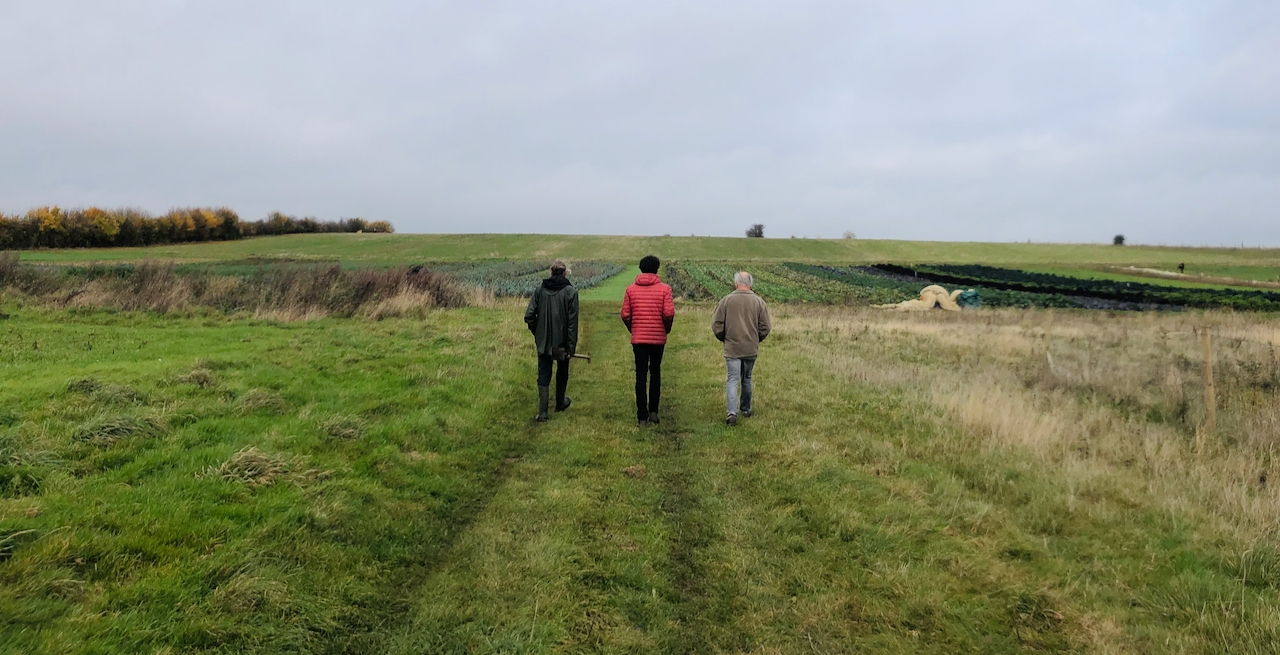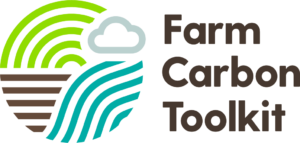
This article was written by FCT Director Andrew Rigg for the RSA blog in December 2021. We are reposting it here with permission:
Farmers have a huge part to play in the fight against climate change. Andrew Rigg, FRSA, a farmer, and Director of the Farm Carbon-Cutting Toolkit CIC, explains how his community is taking carbon out of the atmosphere and putting it back in the soil. But, he cautions calculating the net gains and losses is far from simple.
In 2020 the RSA awarded The Farm Carbon-Cutting Toolkit Community Interest Company a Catalyst Scaling-up Grant to look at carbon sequestration on farms. We have a long name, but it does tell you what we do, and it underlines our approach to our farming community: we’re run by farmers for farmers. The award came at a time when interest in farms and carbon, and in particular soil carbon, was rising rapidly. To us, this was no surprise as the biological world, and so of course farming, offers one of the very few effective mechanisms for drawing down carbon from the atmosphere. Put simply, the total size of the soil carbon reservoir exceeds the total mass of carbon in vegetation and atmosphere combined. There is room for more to be stored, and with about 45 per cent of global soils under some form of agricultural use, farming has a vital climate mitigation role to play.
The grant enabled us to scale up our existing soil carbon sampling, develop improved measurement protocols, and examine how farmers might be remunerated for climate services. We talked to a lot of people over the year as interest grew in the subject. While some questions were answered, many more emerged and assumptions got challenged amidst a wide array of parties and conflicting interests in carbon measurement.
Satellite companies are seeking to measure soil carbon from space, some are flying drones over farms to assess carbon locked into hedgerows. Former derivative traders are trying to work out financial instruments to allow trading of reliable farm carbon offsets. Food companies are trying to understand how carbon flows from field to fork, and farming service companies are seeking to integrate carbon into their services for their farming clients. Meanwhile, farmers are looking to not only improve their soil, but to see if their lost EU payments can be replaced by payments for carbon.
As carbon increases in value, the question “Who owns the carbon” is of increasing importance.
There is a race to get to net zero. Measurement of carbon in natural systems is complex, so how will we know, not only when we are making progress, but how to prioritise the most effective strategies? Farm Carbon Toolkit has developed a farm carbon calculator for farmers to better understand how carbon flows through their farms. This is a “tool” rather than an “audit”. So, recent lower yields and a damp harvest (requiring extra energy to be used to dry grain in store) means the author’s wheat footprint in 2021 is much higher than in the dry and high-yielding harvest of 2020. Variability is everywhere.
Nevertheless, we need the measurement, recording, verification and the appropriate allocation of carbon. Codes exist for woodland creation and peat-land restoration. We are members of a team working on a Farm Soil Carbon Code, and recently started work on a code for hedges. These codes are vital to give confidence to any organisation that may be entering a financial contract with respect to carbon. DEFRA is looking at “blended financial instruments”: how might public payment for public goods be combined with private sector offsets to best achieve carbon drawdown, the removal of carbon from the atmosphere? This is particularly relevant where biodiversity and carbon interests overlap.
Even with a robust set of codes, many questions remain around carbon offsets. Measuring small amounts of carbon absorbed per field is costly both to verify and to aggregate into a financial “instrument”. Consideration needs to be given to the length of the agreement, and the fact that offset values may vary as the price of carbon changes. The permanence of the management changes must be secured; legal agreements need to be drawn up.
If the offset is delivering other co-benefits such as biodiversity gains, does this alter its value? If the sequestration has been achieved because of other funded activity it is perhaps not allowable? Importantly, would an offset interfere with other supply contracts that the farmer wants to sign; can their produce still be considered low carbon if they have also sold carbon offsets?
Crucially, will the offset provide real net gain? A switch to a farm management practice that delivers carbon sequestration in one place, may, if the result is less food being produced, have the effect of creating a bigger carbon footprint elsewhere. This is known as the “leakage issue”. As we achieve local carbon sequestration, can we be sure that collectively these national improvements are not actually making the global situation worse? We in the UK have off-shore some of our manufacturing footprint to China. Can we be sure that a UK offset is not actually increasing the problem? Imported food may have a bigger carbon footprint than home grown produce.
There is a great deal to consider, and complexity to manage, but putting in place financial incentives in order to accelerate carbon sequestration while continuing to produce food is an urgent and important task.
Land use change can be one of the biggest emitters of carbon in agriculture as previously locked-up carbon is released. The potential extent of land use changes implied by the extra food needed in Africa (the UN projects there will be twice as many people in Africa by 2055 than in 2025) makes it imperative that farmers globally not only understand their most carbon-efficient way of farming, but also integrate sequestration into their farm management. In addition to carbon, there are also social and ethical reasons why the global food trade needs to be better managed. But avoiding land use change is possibly the most critical issue in the food chain, for both biodiversity and climate reasons.
Climate futurist Alex Steffen writes that “We’re not yet ready for what has already happened.” We need to also prepare for what is about to happen. The balance between population, diet, climate and biodiversity is set to dominate the next decade. In the UK’s parochial race to net zero, we must not lose sight of global net gain.
Collectively we all need to get a whole lot smarter about how carbon flows through the food chain so we can develop effective strategies for change.
Our work in accounting for carbon within our farming communities continues; you can find out more on our website here.
As well as being Director of the Farm Carbon-Cutting Toolkit, Andrew Rigg farms a 400-acre family arable farm in Hampshire. He co-founded the Environment Centre in Southampton in 1992 and was its chair for 18 years.

